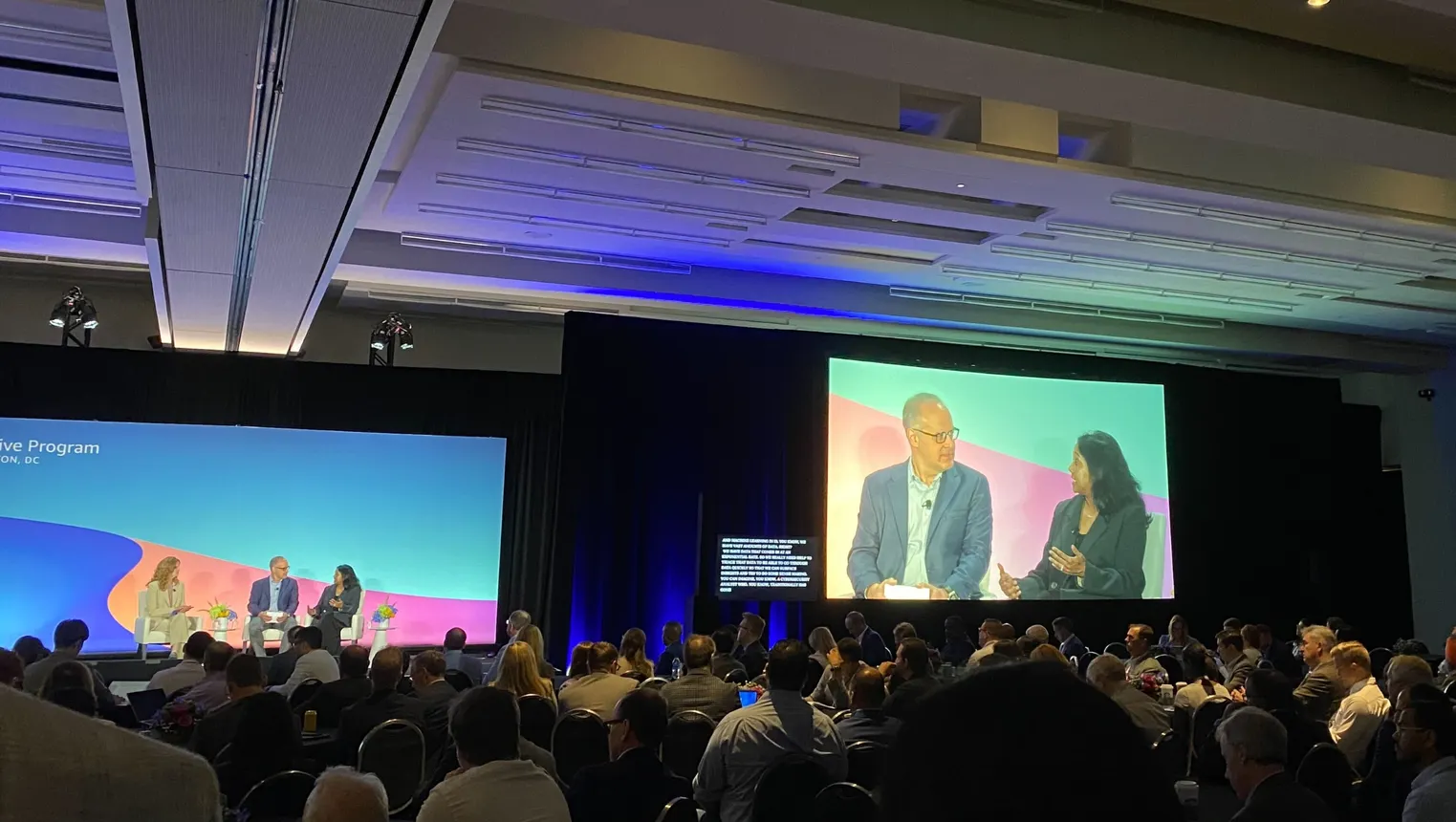WASHINGTON — National security leaders are bullish on AI’s ability to accelerate processes and improve productivity, from declassifying documents to bolstering information security.
“We have released tens of thousands of documents related to the assassinations of JFK and Senator Robert F. Kennedy, and we have been able to do that through the use of AI tools far more quickly than what was done previously, which is to have humans go through and look at every single one of these pages,” Director of National Intelligence Tulsi Gabbard said during the AWS Summit this week.
Gabbard said the agency pursues AI use cases that are tied to the overall mission of making information available when it’s needed. Along with declassifying documents, Gabbard highlighted more typical use cases including within HR and other basic systems. An AI-powered chatbot has also been deployed across the enterprise, opening up possibilities for AI applications, Gabbard said.
“We’ve made progress, but there’s so much room for growth and more application of AI and machine learning,” Gabbard said.
Human oversight and feedback loops help to ensure AI use doesn’t diminish accuracy, compliance or effectiveness. Even so, the technology isn’t error-proof, and guardrails are continuing to evolve as agencies begin dabbling in generative and agentic AI.
“There are things to be concerned about,” Central Intelligence Agency Director of AI Lakshmi Raman said, pointing to model or data drift, explainability of tools and trustworthiness.
Executives in the private sector have similar worries. IT leaders said they’d like to see stronger data privacy and security features in existing agents, according to a Cloudera survey. Businesses have also found it challenging to customize agents and integrate them into current systems.
Even so, adoption of the technology is burgeoning. Companies in nearly every industry are exploring how AI can boost operations, including retailers like Walmart and carmakers like Toyota.
Similarly, national intelligence agencies see potential in agentic services and tools.
“With [concerns] in mind, being able to gather data from multiple spaces and leverage AI agents for cognitive aids is incredibly exciting,” Raman said.

Workforce skills and workflows
The addition of generative AI in workflows is altering how national security agencies look at talent and training.
“We think of it at three different levels: our general workforce, which might be the most important user base with those people who are sitting side by side with AI practitioners,” Raman said. “Then we think about it for our practitioners, so they are really keeping up with the latest. And finally, our senior executives, who can think about how they can transform their organization with AI.”
Raman said the CIA is looking for people who can live at the intersection of technology and human intelligence.
“When we’re thinking about analysts, for example, we’re thinking about people who have critical thinking skills, who can demonstrate analytic rigor, who can think multiple steps ahead with incomplete information,” Raman said. “And we’re also looking for people who have digital acumen with understanding of cloud, cyber and AI.”
Gabbard said there’s been a push for workers to take a step back, assess processes and procedures and identify areas of improvement.
“A lot of this comes for some folks, who’ve been working in the community for a long time, with a change in culture and a change in … education,” Gabbard said.
One of the evolving areas is the accreditation and authorization process.
“You can imagine a cybersecurity analyst who traditionally has gone through network data very manually in order to block suspicious IP addresses or connections,” Raman said. “Now, there’s an opportunity to do all of that really easily.”














